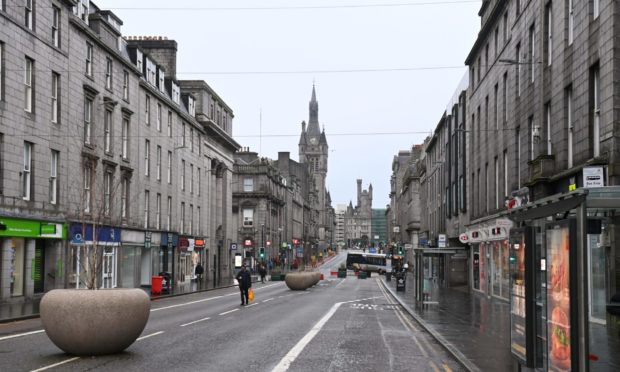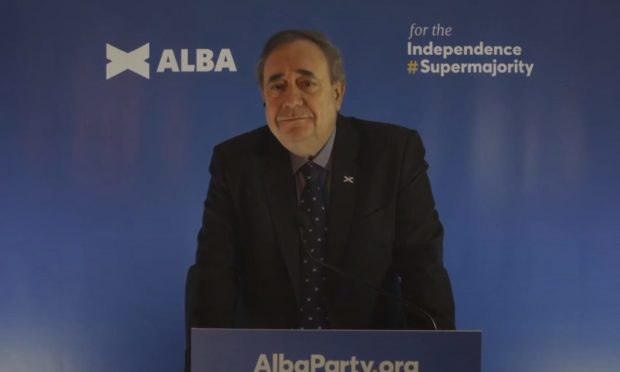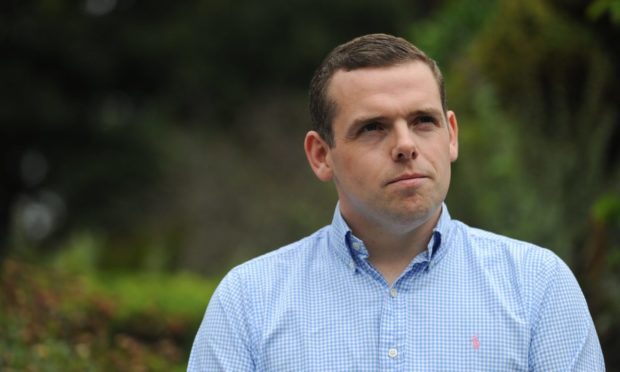The fate of the next Scottish Parliament could come down to finely balanced contests in just a handful of constituencies – and a surprise political comeback.
Polling suggests it could even be a clean sweep for the SNP in constituencies across P&J country.
But in a diversion from previous box office election encounters, look further down the voting order.
The second, regional ballot is where Alex Salmond – the former first minister and ex-SNP leader – eyes a dramatic return to Holyrood. It’s where Conservative MP Douglas Ross is likely to get a place in Holyrood, allowing him to sit with the party he already leads.
And it’s the most likely route into parliament for Scottish Labour candidates in the north who hope to get a boost from new leader Anas Sarwar’s performance.
There could be some further surprises with the Greens hoping to elect more MSPs, while one of their previous candidates, Andy Wightman, is now looking for a way back on his own merits in the Highlands.
Dramatic comeback
The key point about their campaigns is the relatively low threshold for getting into parliament. It’s not about getting the most votes on the more proportional “top up” list.
Mr Salmond is standing in the North East region, a huge area that stretches from the Buchan coast to Firth of Tay, taking in the cities of Aberdeen and Dundee.
Last time Mr Salmond stood for election he still lost with more than 19,000 votes – a massive tally in just one constituency. On May 6, he could re-enter parliament and find himself sitting next to Nicola Sturgeon’s SNP group with a smaller overall share across a wide region.
If north-east voters make that happen, the political impact would be significant, not least on a potential working majority for independence.
Mr Salmond might not get anyone else elected from his Alba party, but his controversial appearance would be dramatic after so much bad blood with former colleagues.
At the same time, Mr Ross needs to win or the Conservatives would be humiliated. But he’s not standing in the all-or-nothing Moray constituency, where the SNP’s Richard Lochhead faces a tough contest.
Instead, he just needs a core Tory vote across the enormous Highlands and Islands region to get in. The party achieved three list MSPs in 2016 in the region, and he’s first in line for a seat this time.
If Mr Ross gets elected – as expected – he will be taking on the leadership job, a Holyrood seat and place in Westminster, along with his outside part-time job as a football assistant referee.
‘Fair deal’
Mr Ross is keen to make the contest about saying no to independence nationally. But here it’s all about the perception of a distant, centralised government and the lack of a “fair deal” for local government, particularly in Aberdeen.
The SNP have some tricky messages to convey here – the party has been in government since 2007. But Aberdeenshire voters were clearly stung by the impact of Brexit, which has potential ramifications for the Conservatives.
Photographs of a near-deserted Peterhead fish market provoked a backlash just weeks ago, but appetite for another independence referendum appears lower than the SNP would hope for to really cement their gains.
Polling results are often analysed with a uniform swing across the country, but that does not always translate in some north and north-east constituency seats.
Shetland and Orkney, for example, continually buck the national trend while the rural nature of the mainland contrasts with what’s going on in the central belt.
In most of the areas, incumbent candidates are digging in to hold on to their seats.
But look out for new Lib Dem challenger Molly Nolan in Caithness, Sutherland and Ross, where the SNP wants to hold on to government minister Maree Todd.
Elsewhere, the Conservatives know they have a fight in Aberdeenshire West, where the SNP’s Fergus Mutch wants to dislodge Tory incumbent Alexander Burnett, defending a 900-vote majority.
And how will voters respond in Argyll and Bute, where veteran nationalist Michael Russell is stepping down?
There are plenty of deep-rooted problems for candidates to deal with.
What’s the recovery plan?
Swing voters are won or lost over their record in rural public services, transport infrastructure, broadband connections and health provision. The tourist industry in the Highlands was dealt a serious blow and local businesses are looking back at how they were supported.
There are constant demands for better ferry connections to the islands, with a sustainable financial settlement.
Local anger about the state of roads from the A90 to the North Coast 500 can be enough to turn voters one way or another.
Politicians know how important that can be, which may explain recent urgency about getting on with a Nairn bypass or Rest and be Thankful relief road.
The route out of the pandemic and how to build a recovery in Scotland could tie all these issues together on May 6 – no matter where you live.


